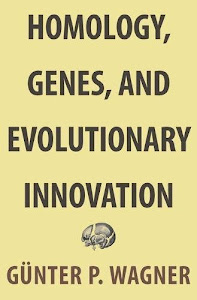
Homology, Genes, and Evolutionary Innovation
Catégorie: Histoire, Sciences, Techniques et Médecine
Auteur: Laurelin Paige
Éditeur: Martin Meadows
Publié: 2016-11-15
Écrivain: Heidi Murkoff
Langue: Serbe, Hindi, Bulgare, Grec, Cornique
Format: Livre audio, pdf
Auteur: Laurelin Paige
Éditeur: Martin Meadows
Publié: 2016-11-15
Écrivain: Heidi Murkoff
Langue: Serbe, Hindi, Bulgare, Grec, Cornique
Format: Livre audio, pdf
Evolution - Wikipedia - This helped identify genes required for vision and pigmentation. Evolutionary theory has many applications in medicine. Many human diseases are not static phenomena, but capable of evolution. Viruses, bacteria, fungi and cancers evolve to be resistant to host immune defences, as well as pharmaceutical drugs.
Dasatinib–SIK2 Binding Elucidated by Homology Modeling ... - Here, we focused on SIK2, which is a target of the Food and Drug Administration (FDA)-approved pan inhibitor N-(2-chloro-6-methylphenyl)-2-(6-(4-(2-hydroxyethyl)piperazin-1-yl)-2-methylpyrimidin-4-ylamino)thiazole-5-carboxamide (dasatinib), and constructed four representative SIK2 structures by homology modeling. We investigated the interactions between dasatinib and SIK2 via molecular docking ...
Evolutionary history of plants - Wikipedia - Evolutionary innovation continued throughout the rest of the Phanerozoic eon and still continues today. ... Genes that code for defense mechanisms in plants must keep changing to keep up with the parasite that constantly works to evade the defenses. Genes that code for attachment mechanisms are the most dynamic and are directly related to the evading ability of the fungi. The greater the ...
Herron & Freeman, Evolutionary Analysis, 5th Edition | Pearson - Completely revised Chapter 19 (Evolution and Development) includes revised coverage of Hox genes, deep homology, developmental constraints and trade-offs, and the evolution of novel traits. The art and design program has been updated to reflect an increasing emphasis on evolutionary genetics and on macroevolution.
Evolution: Glossary - PBS - homeobox genes: "Homeobox genes" are genes that contain "homeoboxes", and can regulate the expression of other genes. There are at least 24 homeobox genes, some but not all of which are also ...
Characters, States and Homology | Systematic Biology ... - Homology relationships among features can be more complex than this simple example when paralogy is also involved. Doyle and Davis (1998:106) illustrated a situation where a gene duplication occurs, resulting in a more complicated diagram is adapted here in Figure 2a to illustrate the different situations that can arise, using symbols to represent characters and states (which ...
The Ecology of Acidobacteria: Moving beyond Genes and Genomes - The phylum Acidobacteria is one of the most widespread and abundant on the planet, yet remarkably our knowledge of the role of these diverse organisms in the functioning of terrestrial ecosystems remains surprisingly rudimentary. This blatant knowledge gap stems to a large degree from the difficulties associated with the cultivation of these bacteria by classical means.
Engineering Broad-Spectrum Resistance to Bacterial Blight ... - FUNDING:This work was supported by grants from the National Priority Program-Breeding New Rice Varieties for Southern and Southwest China Areas (2017YFD0100100; 2017YFD0100202), National Science Foundation of China (U20A2035), Beijing Municipal Natural Science Foundation (6202031), the Innovation Program of Chinese Academy of Agricultural Sciences to and and the Talented Young ...
Homology (biology) - Wikipedia - Homology was noticed by Aristotle (c. 350 BC), and was explicitly analysed by Pierre Belon in his 1555 Book of Birds, where he systematically compared the skeletons of birds and pattern of similarity was interpreted as part of the static great chain of being through the mediaeval and early modern periods: it was not then seen as implying evolutionary change.
Innovation, conservation, and repurposing of gene function ... - Repurposing and innovation of genes are further observed within an exodermis regulatory network and illustrate its function. Comparative translatome analyses of rice, tomato, and Arabidopsis cell populations suggest increased expression conservation of root meristems compared with other homologous populations. In addition, the functions of constitutively expressed genes are more conserved than ...
[online], [goodreads], [free], [kindle], [audible], [pdf], [read], [english], [epub], [download], [audiobook]


















0 komentar:
Posting Komentar
Catatan: Hanya anggota dari blog ini yang dapat mengirim komentar.